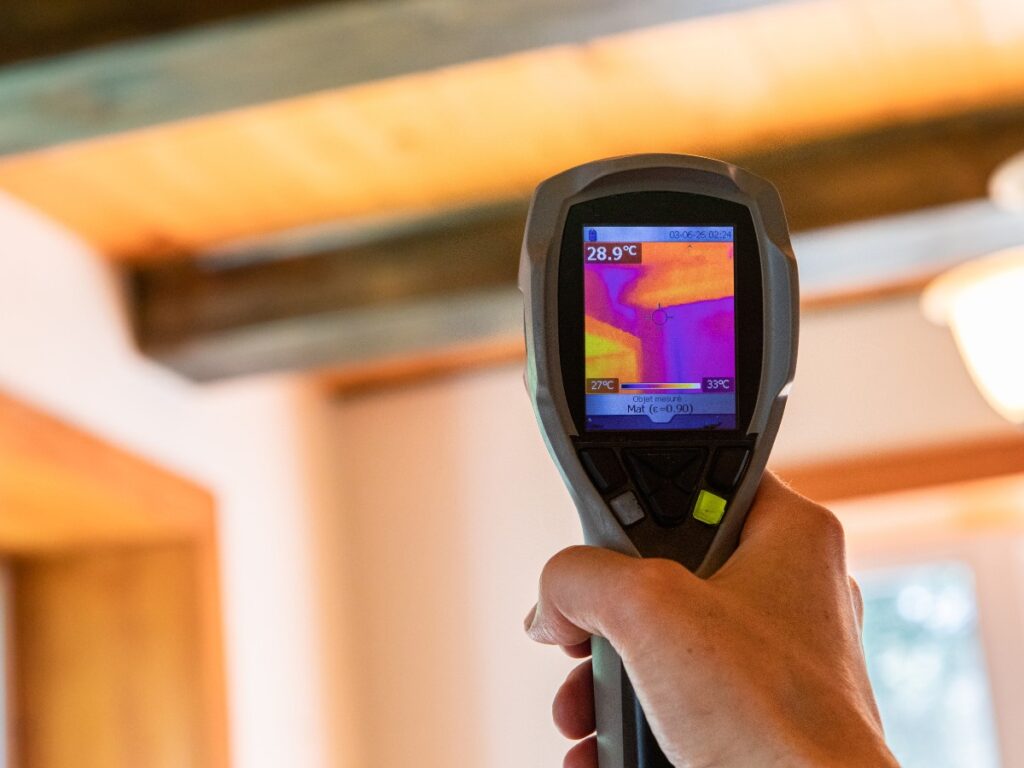Did you know that indoor air can be more polluted than outdoor air? With more time spent indoors due to the pandemic, it has become increasingly important to check and maintain air quality. Poor indoor air quality can lead to various health problems, from allergies and respiratory issues to headaches and fatigue. This blog will guide you through everything you need about indoor air quality testing.
We will cover why it is essential, how to recognize pollutants, and provide a step-by-step guide on testing indoor air quality. We will also discuss the advantages and limitations of DIY testing versus professional services and tips for improving indoor air quality. By the end of this post, you’ll have all the information you need to ensure that the air in your home or office is clean and healthy.
Significance of Regular Air Quality Checks
Regular air quality checks are crucial for identifying potential pollutants and ensuring a healthy indoor environment. Monitoring indoor air quality is essential for safeguarding health, as it aids in detecting dangerous levels of pollutants like volatile organic compounds and chemical pollutants.
By conducting regular checks, you can maintain a clean and healthy indoor environment, thereby protecting against various sources of indoor air pollution, such as dust mites, mold, and mildew. Additionally, regular air quality testing plays a significant role in environmental protection by monitoring carbon dioxide and carbon monoxide levels, both of which are harmful to health.

Recognizing Indoor Air Pollutants
Identifying and understanding indoor air pollutants are paramount for fostering a healthy living environment. This knowledge not only aids in preventing and mitigating potential hazards but also contributes to creating a safe indoor space. Individuals can take essential steps to maintain clean air and promote indoor air quality by recognizing indoor air pollutants.
With the understanding of common indoor air pollutants and their effects, homeowners and office occupants can actively work towards improving their home’s air quality and ensuring a fresh and toxin-free indoor environment.
Common Indoor Air Pollutants and Their Effects
Common indoor air pollutants can severely affect our health, making it crucial to understand their impact. Monitoring carbon monoxide and radon levels is essential to prevent potential health issues, while mold spores in the air can harm our well-being.
Awareness of common indoor air pollutants is critical to reducing health risks, as particulate matter can lead to respiratory problems, necessitating air quality testing. By recognizing these pollutants and their effects, we can take steps to mitigate their impact, promoting a healthier indoor environment.
Symptoms Indicating Poor Indoor Air Quality
Recognizing signs of poor indoor air quality is essential for safeguarding your health and well-being. Symptoms such as headaches, dizziness, and nausea can indicate poor air quality in your home. The exacerbation of allergies and asthma, along with general irritation and discomfort, may also point toward compromised indoor air quality.
Awareness of these symptoms is crucial for prompt action and remediation to ensure a healthy living environment. Identifying the health issues linked to poor indoor air quality enables effective measures to improve your home’s air quality and protect your respiratory health.
Step-by-Step Guide to Check Indoor Air Quality
Ensuring accurate assessment of indoor air quality and understanding the process is essential. An informed step-by-step guide aids in effective air quality testing, including monitoring carbon monoxide and radon levels. This process begins with purchasing an effective indoor air quality monitor.
Using this method, you can proactively prevent health issues related to poor air quality and promptly address environmental concerns. Monitoring volatile organic compounds, dust mites, formaldehyde, and asbestos are critical steps in maintaining a home’s air quality. Recognizing potential sources of mold, mildew, and chemical pollutants and testing for them is necessary for a healthy living environment.
Purchasing an Effective Indoor Air Quality Monitor
Investing in a reliable indoor air quality monitor is vital for continuous monitoring and ensuring a healthy indoor environment. These effective monitors provide real-time data, enabling informed decision-making to maintain clean and fresh indoor air. Selecting a trusted indoor air quality monitor is crucial for obtaining accurate results and safeguarding against poor air quality.
By purchasing an indoor air quality monitor, individuals contribute to environmental protection by monitoring volatile organic compounds, carbon dioxide levels, and chemical pollutants, as the Environmental Protection Agency (EPA) recommended. This investment is essential for addressing indoor air pollution and creating a home environment conducive to well-being and respiratory health.
Testing for Mold in the Air
Testing the air for mold is crucial in identifying and assessing potential mold levels within indoor environments. This process aids in detecting the mold source and assessing mold levels, consequently ensuring a clean indoor environment.
Air quality testing for mold allows for the identification of mold spores and allergens, contributing to the prevention of health issues associated with mold exposure. By conducting such tests, individuals can effectively manage indoor air quality, preventing the adverse effects of poor air quality and safeguarding their well-being.
Interpreting Your Indoor Air Quality Test Results
Understanding air quality testing results is vital for making informed decisions and taking appropriate action. Proper interpretation of the test data helps identify potential health risks associated with poor air quality and guides the implementation of practical solutions to address indoor air pollution.
By deciphering the test results, homeowners can gain insights into the presence of environmental pollutants such as volatile organic compounds and mold, allowing them to take necessary steps to improve their home’s air quality. Accurate interpretation of the test results is crucial for identifying the source of the mold, chemical pollutants, or other toxins and effectively addressing indoor air quality issues.
Tips for Improving Your Indoor Air Quality
Regular ventilation is crucial when aiming to enhance your home’s air quality. This process helps maintain fresh indoor air quality by reducing the accumulation of pollutants and toxins. Minimizing indoor pollutants through routine cleaning improves air quality, promoting a healthier living environment.
Employing air purifiers can effectively reduce indoor air contaminants, combating poor air quality and creating a more breathable atmosphere. Monitoring humidity levels is equally important, as it aids in preventing mold growth and maintains the overall air quality within your home.
Furthermore, opting for low-VOC products significantly improves indoor air quality, ensuring a safer and healthier living space for you and your family.
The Role of Air Purifiers in Maintaining Good Indoor Air Quality
Investing in quality air purifiers greatly enhances overall indoor air quality, effectively eliminating harmful pollutants such as dust mites, pet dander, and volatile organic compounds. Properly maintained air purifiers are crucial for maintaining healthier indoor environments by significantly reducing allergens and particulate matter.
Furthermore, air purifiers play a vital role in reducing the impact of poor air quality in spaces with large amounts of chemical pollutants or high carbon dioxide levels. By using air purifiers, homeowners can ensure that their home’s air quality meets the standards set by the Environmental Protection Agency, promoting a fresher and healthier indoor environment.
Choosing the Right Professional for IAQ Testing
Selecting certified professionals is crucial when ensuring accurate and reliable indoor air quality testing. Evaluating the expertise and experience of these professionals can aid in making informed decisions about indoor air quality. Choosing reputable professionals to guarantee thorough and precise air quality testing is essential.
Researching professional certifications is also essential to ensure that you are selecting qualified air quality experts. Hiring professionals with proven track records also ensures trustworthy air quality assessments, giving you peace of mind about the air you breathe indoors.
Consider investing in an effective indoor air quality monitor and explore options like air purifiers to enhance the quality of the air you breathe. Remember, prioritizing indoor air quality contributes to a healthier and more comfortable living space for you and your loved ones.

